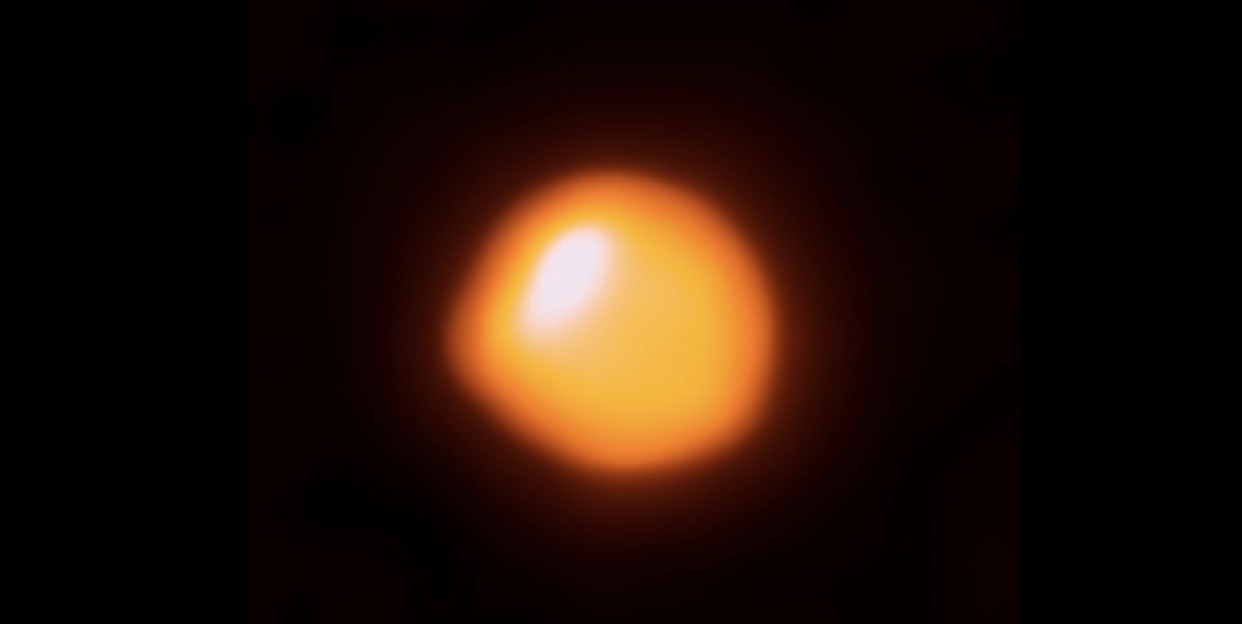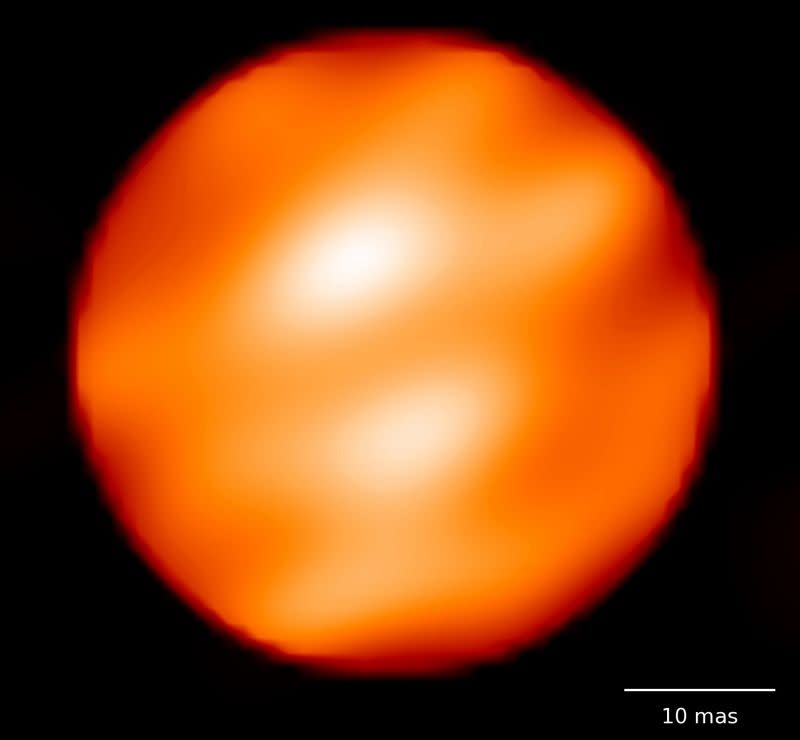As Betelgeuse Dims, Scientists Wonder If We're Watching a Star Die

Betelgeuse, once one of the brightest stars in the night sky, has dimmed significantly in recent months.
This shift in brightness could signal changes for the red star, and some scientists believe a supernova could be on the horizon.
Betelgeuse has a mass about 20 times that of our sun and would swallow everything up to Jupiter, were it to swap spots with our Sun.
One of the brightest stars in the sky has dimmed in recent months. Betelgeuse, a star in the Orion constellation—the right shoulder, to be exact— has dramatically decreased its luminosity, and scientists believe this shift could usher in a new era for the star.
The star, which once held court among the top ten brightest stars in the northern sky, now isn’t even in the top 20, reports Villanova University’s Edward Guinan in an Astronomer’s Telegram in earlier this month though scientists first noticed the dimming in October.
Some astronomers suspect the end may be near for this beloved red star.
In some cases, before a star goes full on supernova, it loses an incredible amount of mass, expelling a voluminous cloud of dust. That dust often shrouds stars, hiding them from Earth’s telescopes before they eventually explode. (There’s a chance the star has already exploded, since it takes light traveling from Betelgeuse about 600 years to reach our planet.)

So, what exactly would a supernova explosion look like from Earth? According to researchers, it would likely flare up, burning brighter in the sky than our Moon, casting shadows on Earth’s surface on dark nights. It would likely even be visible during the day, according to National Geographic. Eventually, though, the star would slowly fizzle out, its fuel spent and dust dissipated. Then, it would disappear forever.
Although a sad fate for Betelgeuse, catching a supernova like this would be an incredible opportunity for astronomers. “It would be so incredibly cool!” astronomer Sarafina Nance of UC Berkeley told National Geographic. “By far and away the most incredible thing to happen in my life.”
Some scientists are skeptical that Betelgeuse’s dimming may signal a supernova. The star is peculiar because it’s a type of star called a variable star, which means its brightness shifts cyclically, over the course of about six years and 425 days. He suspects that these two cycles may actually have overlapped, and that we’re witnessing a low luminosity period. Previous astronomical models have suggested that the star may have millions of years to go before it kicks the proverbial bucket.
There’s a chance that convective changes on the star’s surface could be responsible, too. “Images of Betelgeuse show bright and dark features on its surface, and at times it is not symmetrical,” Guinan told National Geographic. “The star is bloated and unstable, with pulsations, as well.”
Regardless of the outcome, in the coming weeks, months, and years, astronomers will have their telescopes trained on the Orion constellation, hoping to catch site of a cosmic needle in a haystack.
You Might Also Like

